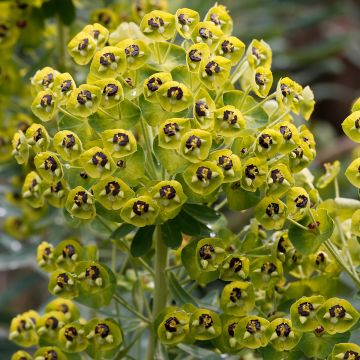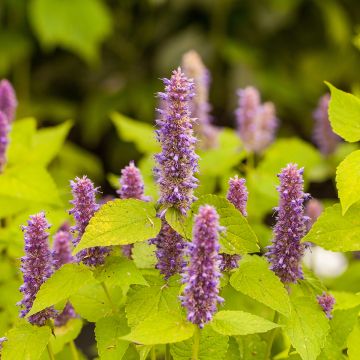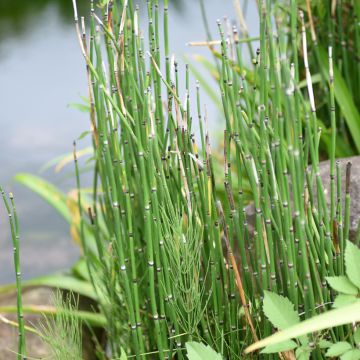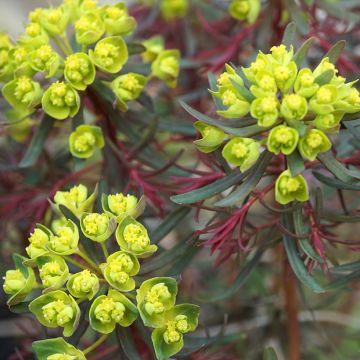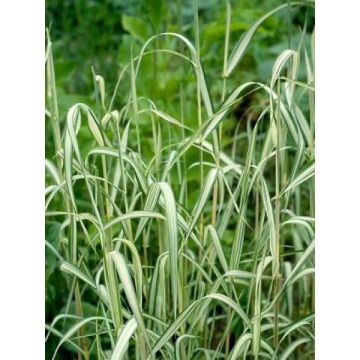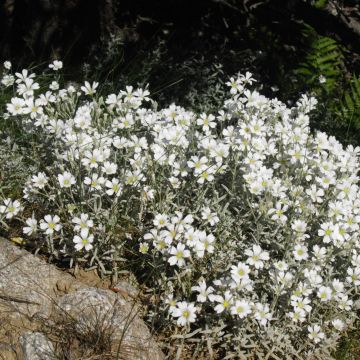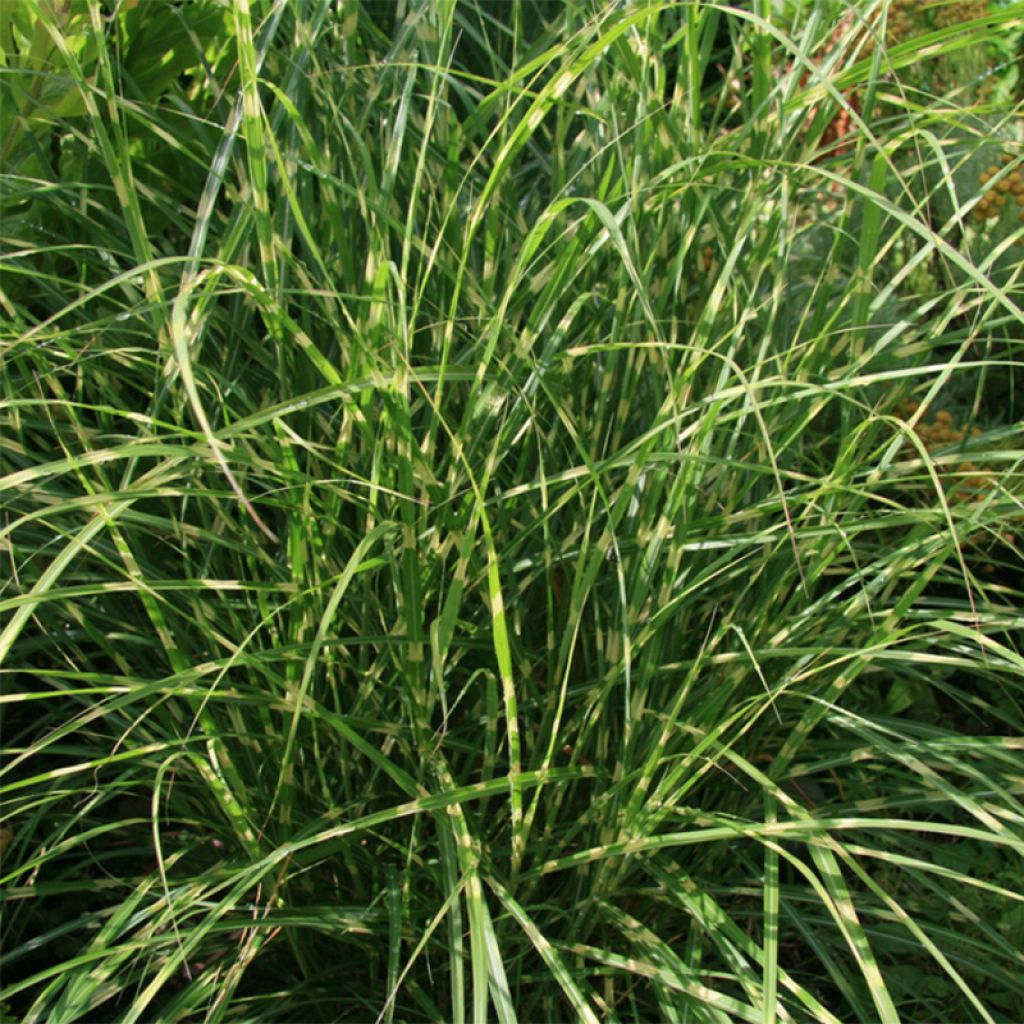

Miscanthus sinensis Little Zebra - Silvergrass
Miscanthus sinensis Little Zebra - Silvergrass
Miscanthus sinensis Little Zebra
Eulalia, Porcupine Grass, Chinese silver Grass, Maiden Grass, Zebra Grass, Susuki Grass
The plant arrived in dormancy. It has recovered very well and has become magnificent.
Christel , 20/08/2024
This item cannot be shipped to the selected country
Delivery charge from €5.90
Delivery charge from €5.90
More information
Schedule delivery date,
and select date in basket
This plant carries a 12 months recovery warranty
More information
We guarantee the quality of our plants for a full growing cycle, and will replace at our expense any plant that fails to recover under normal climatic and planting conditions.
From €5.90 for pickup delivery and €6.90 for home delivery
Express home delivery from €8.90.
From €5.90 for pickup delivery and €6.90 for home delivery
Express home delivery from €8.90.

Does this plant fit my garden?
Set up your Plantfit profile →
Description
The Miscanthus sinensis 'Little Zebra' is a small round Chinese reed, very bushy, with a sparkling foliage made of dark green ribbons, regularly barred with cream yellow lines widthwise. Such a presence deserves to be highlighted in flowerbeds or in large containers, for its beautiful structure, its undeniable brilliance and its truly dense, small fountain-like habit. The beigepink fluffy inflorescences appear in September and persist on the plant until December.
The 'Little Zebra' eulalia belongs to the poaceae family. Close to the 'Zebrinus' variety, but much more compact, it is a horticultural selection derived from Miscanthus sinensis, native to eastern Asia and Oceania. This perennial grass with short rhizomes grows in a non-spreading clump, it is cespitose. The very dense clump-like habit, both upright and slightly trailing, does not exceed 80 cm (32in) in height, with a relative spread of 50 cm (20in). The leaves are thin and ribbon-like, very long, quite flexible, dark green, striped with light yellow. The floral stems emerge just above the foliage from September to November, in the form of digitate and silky spikes, 15 to 20 cm (6 to 8in) long, beige pink. As they fade, they take on a more burgundy hue. The plumes are made up of tiny flowers that close a little afterwards, to reopen at maturity. They then take on a more fluffy appearance.
Among ornamental grasses, Miscanthus is probably one of the most beautiful and least invasive. It has been the subject of numerous selections and is the origin of many cultivars. They all share their upright, regular and arched clump-like silhouette, with long leaves with a light median stripe, which turn a straw yellow in winter. 'Little Zebra' is also a wonderful perennial that grows on its own, perfect for contemplative gardeners. The king of terraces and balconies, it has its place in a modern garden with simple lines, a Japanese garden, or in large ensembles where it will lighten the flowerings. When winter comes, just like conifers, it lights up the garden with its reassuring silhouette. In an urban garden, it will awaken and soften concrete structures.
Report an error about the product description
Miscanthus sinensis Little Zebra - Silvergrass in pictures
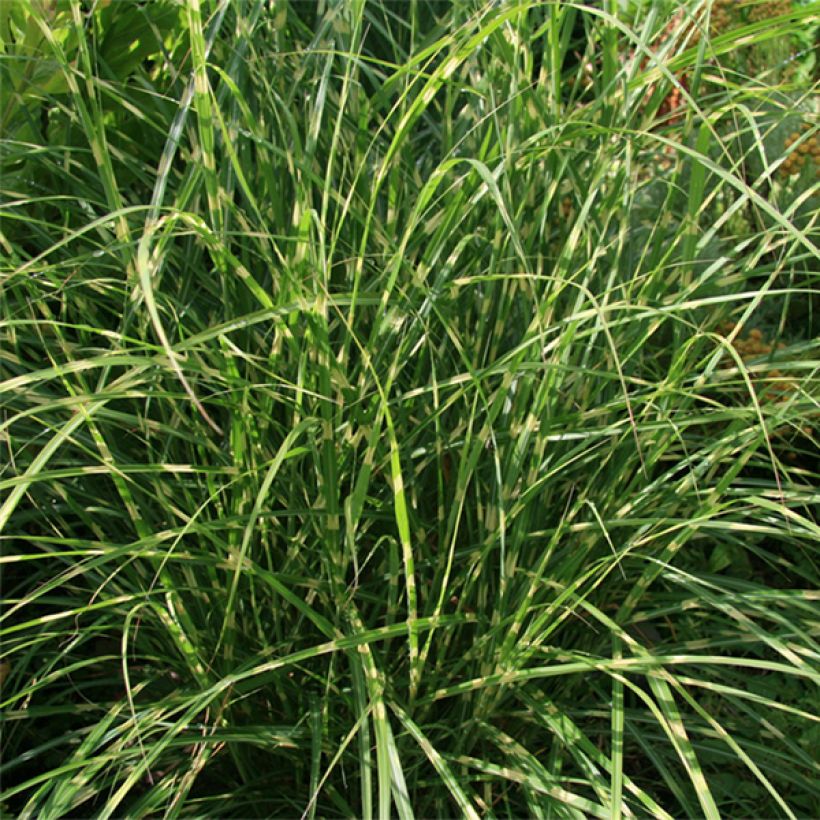

Flowering
Foliage
Plant habit
Botanical data
Miscanthus
sinensis
Little Zebra
Poaceae
Eulalia, Porcupine Grass, Chinese silver Grass, Maiden Grass, Zebra Grass, Susuki Grass
Cultivar or hybrid
Other Miscanthus
Planting and care
Miscanthus sinensis 'Little Zebra' thrives in warm exposures and a healthy, not too rich and deep, well-drained but moist soil in summer, without stagnant humidity in winter. A soil that is too rich can encourage lush vegetation at the expense of flowers. A spring compost addition can be beneficial in very poor soils. This plant tolerates occasional drought if the soil is deep. It can cope with poor soil, but it will be less imposing and its growth slower. Warm climate grasses such as Miscanthus, Panicum, and Pennisetum develop in late spring, they are in bloom after mid-summer and are usually cut back in late winter. It is therefore preferable to plant them in spring, after the strongest frosts have passed. Miscanthus are good plants for containers. For container planting, choose a large container (minimum 45L), filled with a fertile, well-draining and flexible growing medium. A mixture composed of 20% good garden soil, 20% mixed draining elements (pumice or gravel or coarse river sand), 60% horticultural compost. Apply well-decomposed compost once or twice a year (late winter and autumn) or slow-release fertilizer. When it becomes less floriferous, divide the clump and recover the peripheral shoots for replanting.
Planting period
Intended location
Care
-
, onOrder confirmed
Reply from on Promesse de fleurs
Coloured foliage perennials
Haven't found what you were looking for?
Hardiness is the lowest winter temperature a plant can endure without suffering serious damage or even dying. However, hardiness is affected by location (a sheltered area, such as a patio), protection (winter cover) and soil type (hardiness is improved by well-drained soil).

Photo Sharing Terms & Conditions
In order to encourage gardeners to interact and share their experiences, Promesse de fleurs offers various media enabling content to be uploaded onto its Site - in particular via the ‘Photo sharing’ module.
The User agrees to refrain from:
- Posting any content that is illegal, prejudicial, insulting, racist, inciteful to hatred, revisionist, contrary to public decency, that infringes on privacy or on the privacy rights of third parties, in particular the publicity rights of persons and goods, intellectual property rights, or the right to privacy.
- Submitting content on behalf of a third party;
- Impersonate the identity of a third party and/or publish any personal information about a third party;
In general, the User undertakes to refrain from any unethical behaviour.
All Content (in particular text, comments, files, images, photos, videos, creative works, etc.), which may be subject to property or intellectual property rights, image or other private rights, shall remain the property of the User, subject to the limited rights granted by the terms of the licence granted by Promesse de fleurs as stated below. Users are at liberty to publish or not to publish such Content on the Site, notably via the ‘Photo Sharing’ facility, and accept that this Content shall be made public and freely accessible, notably on the Internet.
Users further acknowledge, undertake to have ,and guarantee that they hold all necessary rights and permissions to publish such material on the Site, in particular with regard to the legislation in force pertaining to any privacy, property, intellectual property, image, or contractual rights, or rights of any other nature. By publishing such Content on the Site, Users acknowledge accepting full liability as publishers of the Content within the meaning of the law, and grant Promesse de fleurs, free of charge, an inclusive, worldwide licence for the said Content for the entire duration of its publication, including all reproduction, representation, up/downloading, displaying, performing, transmission, and storage rights.
Users also grant permission for their name to be linked to the Content and accept that this link may not always be made available.
By engaging in posting material, Users consent to their Content becoming automatically accessible on the Internet, in particular on other sites and/or blogs and/or web pages of the Promesse de fleurs site, including in particular social pages and the Promesse de fleurs catalogue.
Users may secure the removal of entrusted content free of charge by issuing a simple request via our contact form.
The flowering period indicated on our website applies to countries and regions located in USDA zone 8 (France, the United Kingdom, Ireland, the Netherlands, etc.)
It will vary according to where you live:
- In zones 9 to 10 (Italy, Spain, Greece, etc.), flowering will occur about 2 to 4 weeks earlier.
- In zones 6 to 7 (Germany, Poland, Slovenia, and lower mountainous regions), flowering will be delayed by 2 to 3 weeks.
- In zone 5 (Central Europe, Scandinavia), blooming will be delayed by 3 to 5 weeks.
In temperate climates, pruning of spring-flowering shrubs (forsythia, spireas, etc.) should be done just after flowering.
Pruning of summer-flowering shrubs (Indian Lilac, Perovskia, etc.) can be done in winter or spring.
In cold regions as well as with frost-sensitive plants, avoid pruning too early when severe frosts may still occur.
The planting period indicated on our website applies to countries and regions located in USDA zone 8 (France, United Kingdom, Ireland, Netherlands).
It will vary according to where you live:
- In Mediterranean zones (Marseille, Madrid, Milan, etc.), autumn and winter are the best planting periods.
- In continental zones (Strasbourg, Munich, Vienna, etc.), delay planting by 2 to 3 weeks in spring and bring it forward by 2 to 4 weeks in autumn.
- In mountainous regions (the Alps, Pyrenees, Carpathians, etc.), it is best to plant in late spring (May-June) or late summer (August-September).
The harvesting period indicated on our website applies to countries and regions in USDA zone 8 (France, England, Ireland, the Netherlands).
In colder areas (Scandinavia, Poland, Austria...) fruit and vegetable harvests are likely to be delayed by 3-4 weeks.
In warmer areas (Italy, Spain, Greece, etc.), harvesting will probably take place earlier, depending on weather conditions.
The sowing periods indicated on our website apply to countries and regions within USDA Zone 8 (France, UK, Ireland, Netherlands).
In colder areas (Scandinavia, Poland, Austria...), delay any outdoor sowing by 3-4 weeks, or sow under glass.
In warmer climes (Italy, Spain, Greece, etc.), bring outdoor sowing forward by a few weeks.













































